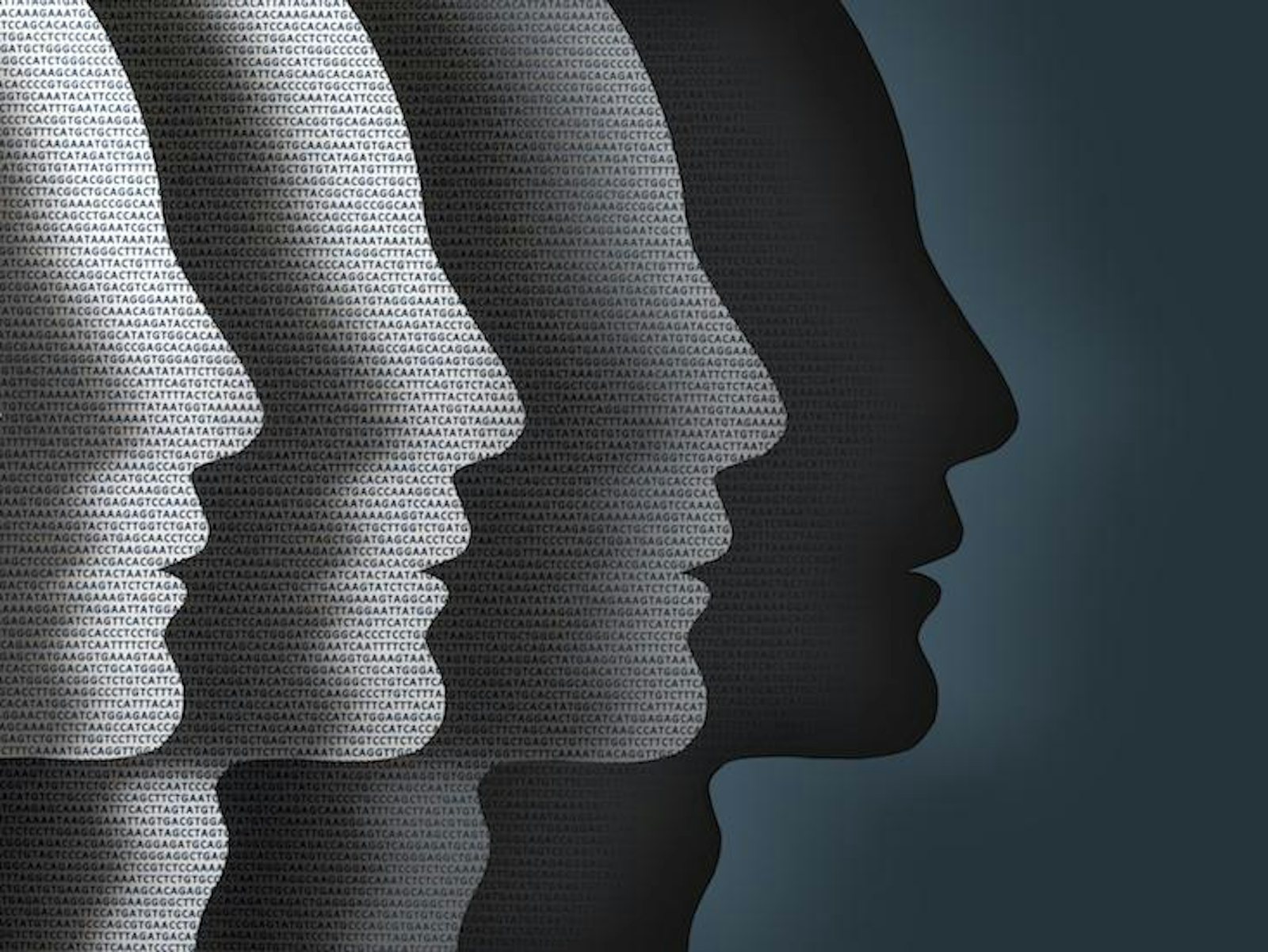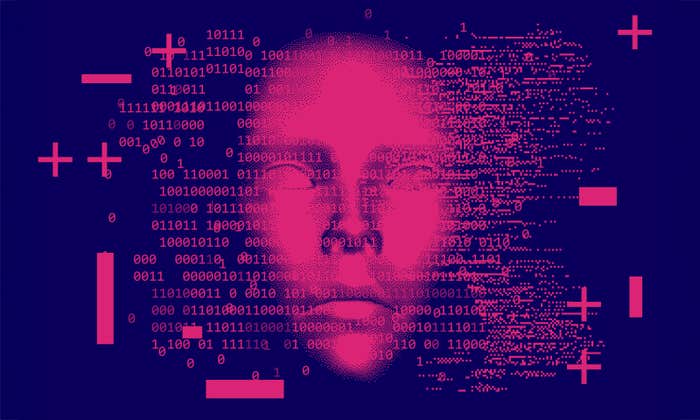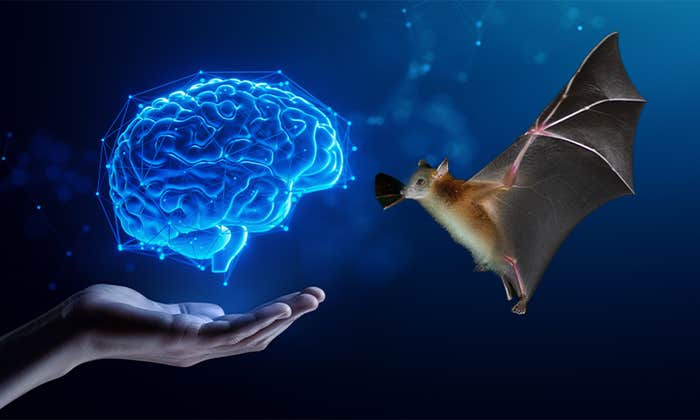Jill Viles, an Iowa mother, was born with a rare type of muscular dystrophy. The symptoms weren’t really noticeable until preschool, when she began to fall while walking. She saw doctors, but they couldn’t diagnose her or supply a remedy. When she left for college, she was 5-foot-3 and weighed just 87 pounds.
How she would spend her time there turned into part of a remarkable story by David Epstein, published in ProPublica in January. Viles tore through her library’s medical literature and came up with a self-diagnosis—Emery-Dreifuss, a rare form of muscular dystrophy—and she was right. Then she came across photos of a female Canadian Olympic hurdler, Priscilla Lopes-Schliep, and she realized that, despite the hurdler’s muscular frame, she still displayed some of the same physical characteristics—similarly prominent arm and leg veins, peculiarly missing fat, and the same separation between butt and hip muscles. Eventually, in a slow, roundabout way, Viles managed to contact Lopes-Schliep and confirm that they shared the same type of partial lipodystrophy, Dunnigan-type. By comparing their genomes, scientists could determine that both women had a mutation in the same gene, though they were mutated in different ways—explaining, perhaps, why Viles’ muscles degenerated and Lopes-Schliep’s didn’t.
Viles’ story illustrates the challenge of finding the genetic cause for rare diseases, which some define as affecting less than 5 in 10,000 people. Heidi Rehm, a professor of pathology at Harvard Medical School, has set out to speed up and streamline the matching process. Since last July, Rehm and a group of geneticists launched Matchmaker Exchange, a network of gene databases that helps solve the causes of rare disease by matching the disease symptoms and genotype between at least two people’s cases. The goal in the next 5 to 10 years, Rehm says, is to see if there is a common variant in a novel gene that’s never been implicated in a disease. It’s been likened to the online dating site of rare genetic diseases.
Nautilus caught up with Rehm to learn more about her work.
Why is Matchmaker Exchange necessary?
Each individual human genome has 3 to 5 million variants with over 80 million variants in the global population. Trying to figure out which variants are actually responsible for disease and which ones are along for the ride and have no health impact is quite challenging. Just one case with a variant in that gene is not enough evidence to implicate that gene as causal for that patient’s disease. However, if the second patient comes along, and they’ve got the same very rare and unique disease, this helps build evidence for your argument. If we can bring those matches together, it could provide enough evidence to actually solve the cause of a disease.
What does Matchmaker Exchange do?
There are already various databases that have been serving as matchmakers for a number of years and have been making lots of discoveries. As of last July, we hooked up three of these databases with more coming online, so that we can support matching between each system, and not just within each system. That enables exponential growth of the matching that can happen by hooking all the databases up together—everybody keeps their own database but they allow queries to happen. And when a query goes from one database to another, it makes the match, but databases get notified. If you have a case, and you initiate the query, and you match on my case, not only do you get something back that says, “It’s a match!” but I automatically get notified.
How do the algorithms work?
There are some algorithms that match phenotype. For instance, if I had two kids, both of whom had autism, then just getting one match between the two may not be enough to determine the cause of the disease because autism is so common. It’s not a unique phenotype. On the other hand, if I had a sick patient with bifid uvula, a short stature, freckles, and a white forelock in their hair, and then I find another patient on the other side of the world that has all these same unique things already, you think, “Oh my gosh, that’s the same disease!”
So, then you sequence their genome and use an algorithm to determine their match, and let’s say it finds that they have a de novo variant, which is quite rare, and then this would give these two cases a really high score for a match. There are other genetic things I can use to increase and decrease the strengths of the genetic findings in terms of our algorithms, such as how rare is this union of two cases by chance? We can use algorithms to score that.
Does finding a match also mean that you’ve landed on the cause of the disease?
It varies. In some cases you can match patients just on phenotype, which brings them together, but it may not solve their disease. Other cases may be like autism, just bringing two cases together with the same gene variant involved is probably not enough to build evidence, but if you had 100 patients with autism, all of whom had the same gene variant involved, now you really have built enough evidence. So each disease, depending on how common it is, may require different numbers of cases to support the discoveries you’re trying to make.
Is it accurate to compare the algorithms used by Matchmaker Exchange to online dating sites like OK Cupid?
There is not that much relationship to the online dating world, although you can hypothesize how some things can be similar. But the algorithms were entirely built by the genetic science community.
How many matches have been made?
Since Matchmaker Exchange began running a few months ago, there has already been at least one match.
Only one? That doesn’t seem like much.
The issue in part is that we’ve only connected three databases so far, and the areas of focus of the three databases are a bit different. As we bring more databases into the exchange, the value of the Matchmaker Exchange connectivity will increase.
How does Matchmaker Exchange help patients get involved in the process of scientific discovery?
We’ve actually launched a patient registry called Genome Connect that is connected to Matchmaker Exchange, which allows patients to form social networks, communicate, and find others like themselves, as well as allow them to find research studies that they can enroll in. A lot of these researchers and physicians are busy, and they don’t have a lot of time to bring people together. But the patients and the families are highly motivated. They’re willing to spend that time, because it’s their lives; it’s their children’s lives.
Regan Penaluna is an assistant editor at Nautilus. Follow her on Twitter @ReganJPenaluna.


























